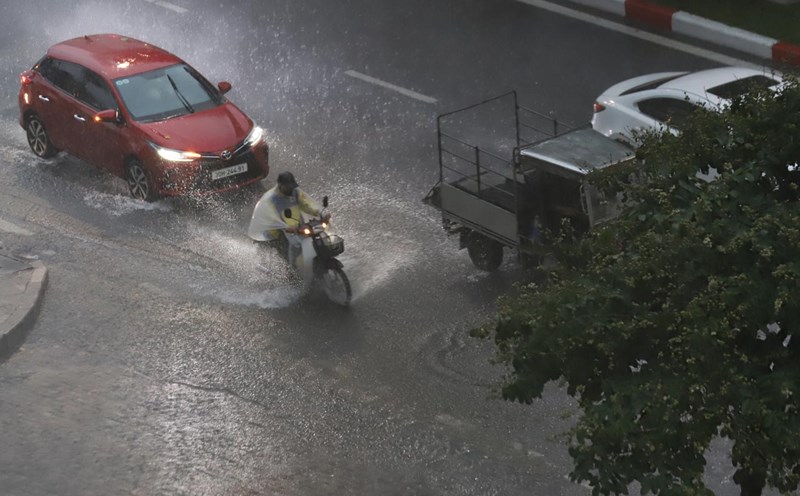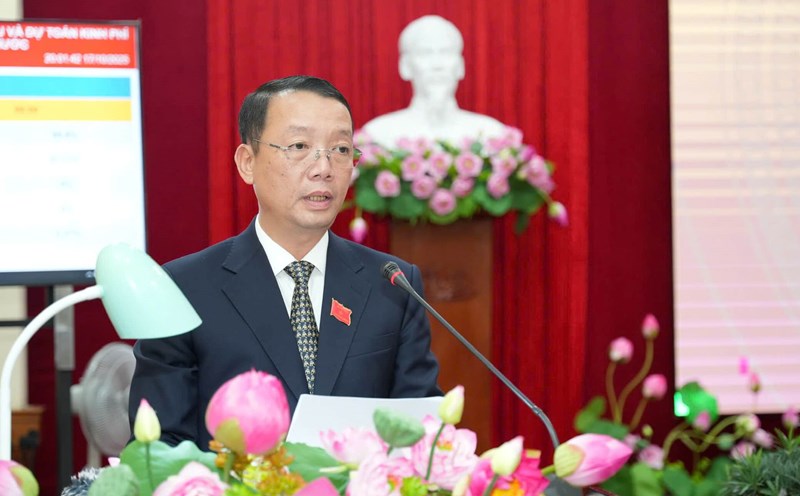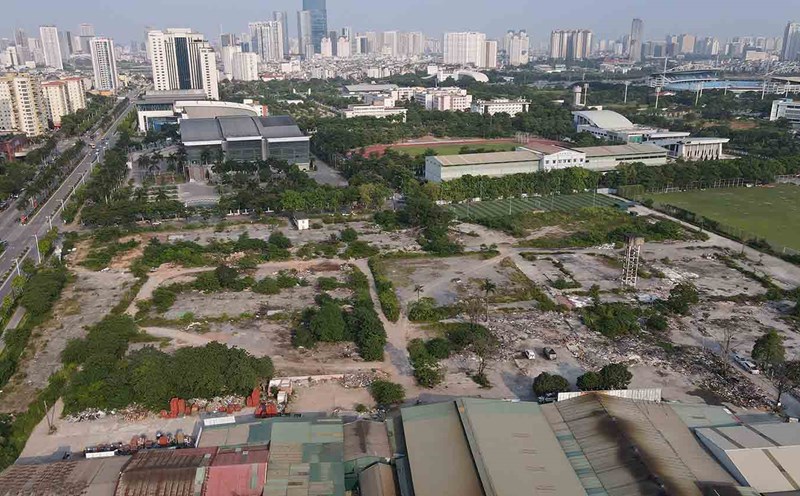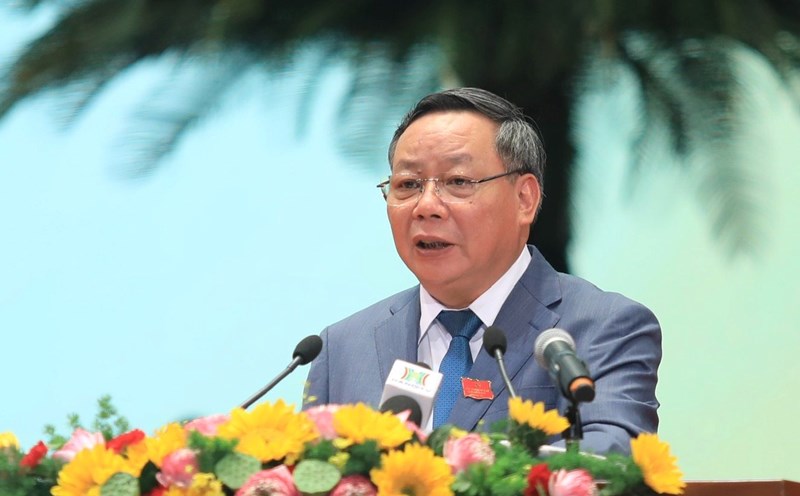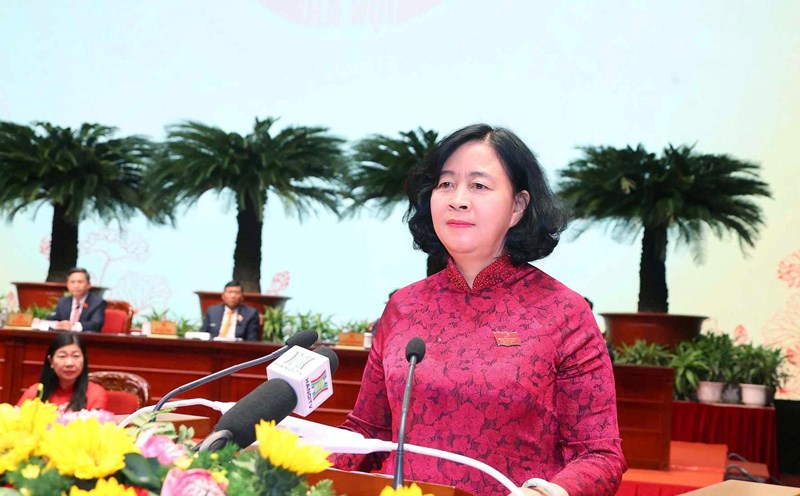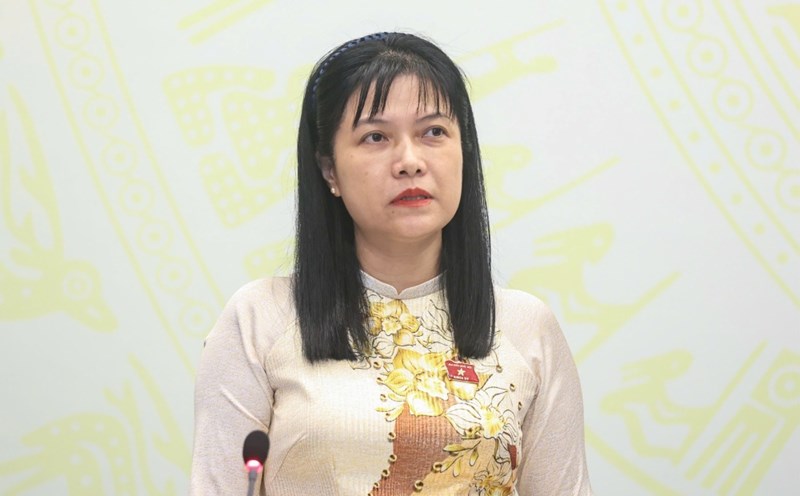Mr. Pham Manh Khac (residing in Xuan Phuong ward, Hanoi) shared that prolonged heavy rain due to the circulation of storm No. 11 has turned many streets in Hanoi into "sea of water". In particular, a section on Xuan Phuong Street was also flooded.
"Every time there is heavy rain, there is flooding. The streets are like rivers, and when going to work by motorbike, the engine often stalls. People are now very tired, hoping that Hanoi will have a comprehensive solution to prevent this situation from happening again," said Mr. Khac.
Mr. Khac said that, in the face of the current flooding situation, there needs to be more transparency in the management and operation of the drainage system.
"We heard that the city has invested thousands of billions of VND in flood prevention, but after just one hour of rain, the water is up to the knees. It is necessary to clearly publicize which sewers have been renovated and which lakes are still congested so that people know and monitor them, Mr. Khac suggested.
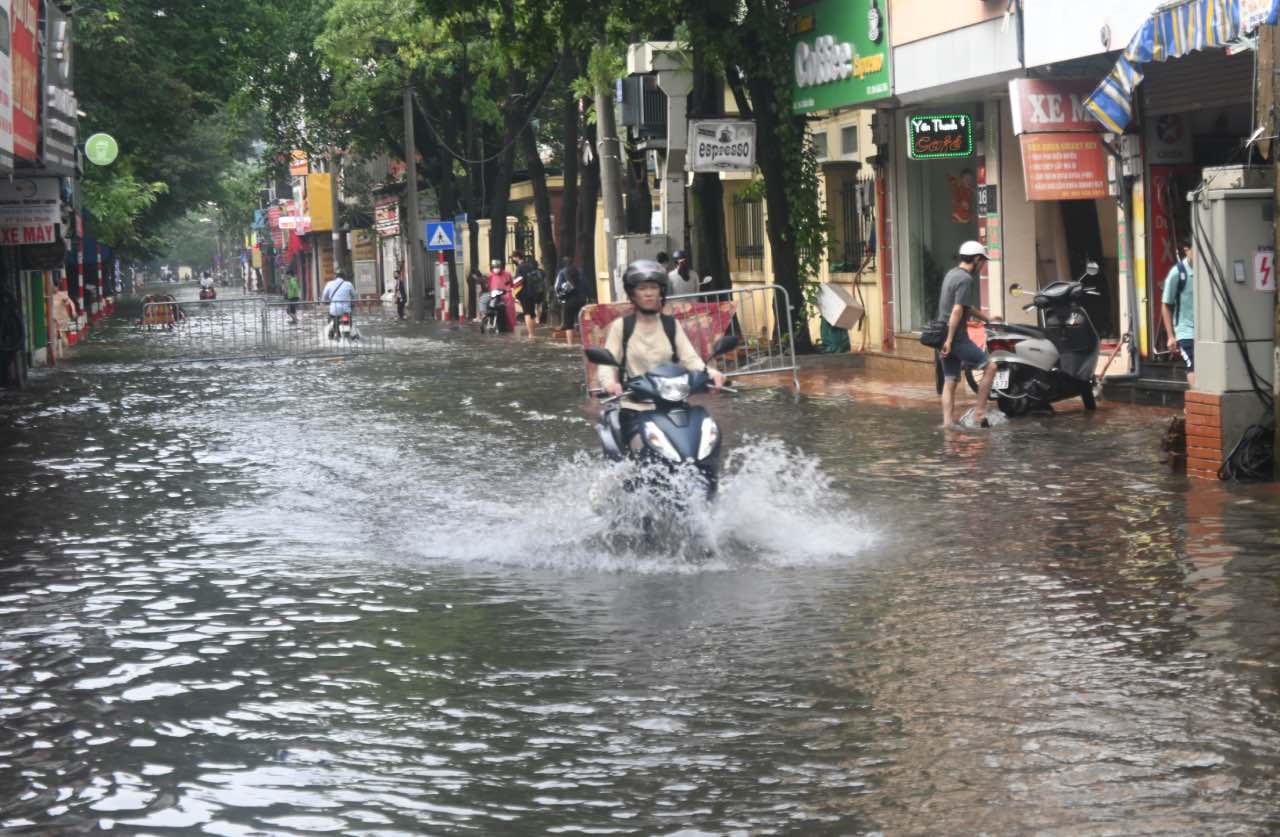
Regarding the flooding situation in Hanoi in October 2025, speaking with a reporter from Lao Dong Newspaper, Mr. Nguyen Duc Hung - Director of the Hanoi City Infrastructure Management Center - said: according to statistics for traffic assurance, there are currently about 120 flooded areas in the city.
The main cause of this situation is that the amount of rain exceeds the drainage capacity of the existing system. In addition, the drainage system has not been built synchronously, many areas still use old, degraded infrastructure. The urbanization and concreting of sidewalks and land has significantly reduced the ability to absorb and drain water naturally. Along with that, many lakes and ponds that used to have the role of regulating and storing water in urban areas, although they were planned to be retained by the city, have been narrowed due to the process of road opening, developing transport infrastructure and rapid urbanization.
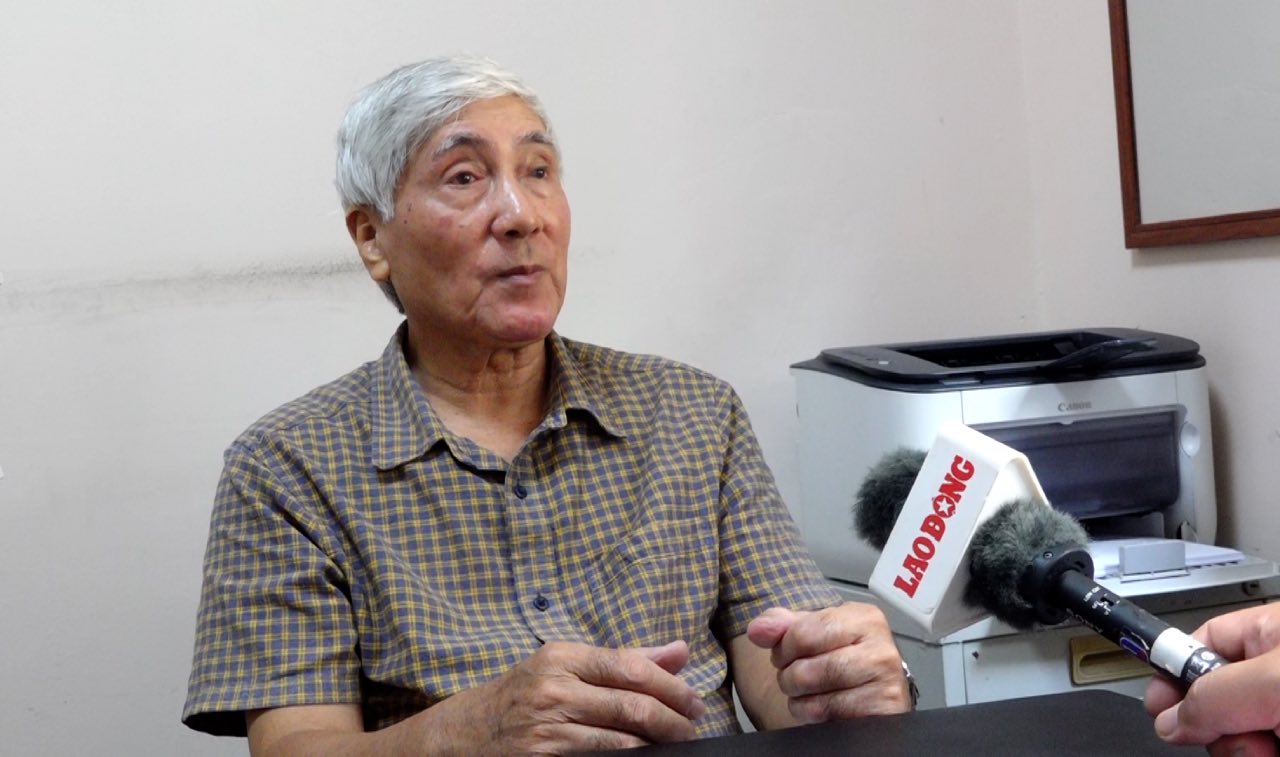
Architect Pham Thanh Tung - Chief of Office of the Vietnam Association of Architects - said that the situation of "flooding every time it rains" in Hanoi is a consequence of uncontrolled urban development, disrupting the natural structure of the flow.
Once known as the "city of lakes and rivers", but over time of urbanization, most of the lakes have been filled or significantly narrowed. When natural "water bags" are wiped out, rainwater has no place to leak, forcing it to be dumped into the drainage system, which is already overloaded. Along with local changes in urban foundations, high places and low places due to uneven leveling, natural flows are cut off, causing local flooding in many areas.
"When we only worry about building sewers and ditches without taking into account basins, water storage space and drainage corridors, no matter how much investment is made, it will only be temporarily resolved," said Architect Pham Thanh Tung.
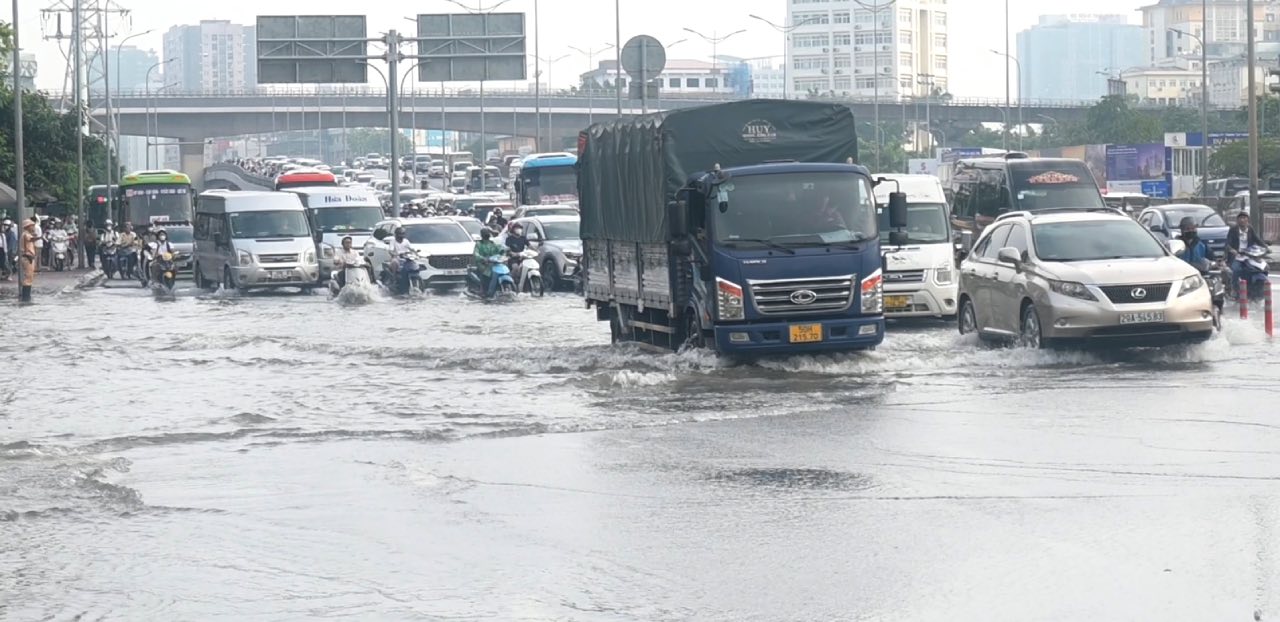
According to Architect Tung, Hanoi's biggest weakness is the lack of consistency between construction planning and drainage planning. Each project is approved in each stage, each area, and is managed by many different agencies, lacking cohesion.
"Drinching planning must go before construction planning, but in reality, the opposite is true. We will build a house, open a road and then think about where the water will go. As a result, after finishing, the glue had to be dug up and patched. The regulating lake system, which is considered a "safe zone" of the city, has not been properly developed. Many lakes are filled and heavily polluted, causing the ability to contain water to decrease significantly, said Architect Tung.
To solve the problem at its root, according to Architect Pham Thanh Tung, Hanoi needs to restore filled lakes, ponds, and canals to recreate a natural water storage network. At the same time, build more regulating lakes and interconnecting pumping stations to connect the basins. At the same time, apply water seeping materials in sidewalks, parking lots, and parks, helping rainwater seep into the ground, reducing the load on the sewer system.
Architect Pham Thanh Tung also said that each heavy rain is a test of Hanoi's urban management capacity. We talk a lot about smart cities, about digital transformation, but basic infrastructure such as drainage is still not smart. To be modern, we must first solve the most basic thing: where the water goes when it rains," said Architect Tung.
According to Architect Tung, Hanoi needs to rethink the entire drainage strategy, associated with the overall planning and sustainable development orientation. If it does not change, the city will forever struggle in a vicious cycle: rain - flood - overcome - then flood again.


